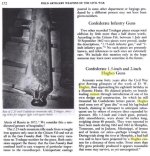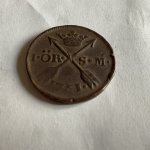YBnormal
Jr. Member
- Oct 21, 2017
- 27
- 111
- Detector(s) used
- CTX 3030, Troy Shadow X5
- Primary Interest:
- All Treasure Hunting
A Little help from the experts please, Creek find in vicinity of other civil war artillery items.
3.8 Lbs, 2 inch dia, 4.75 inch long, Any Ideas on what this one is?


3.8 Lbs, 2 inch dia, 4.75 inch long, Any Ideas on what this one is?
Last edited:







